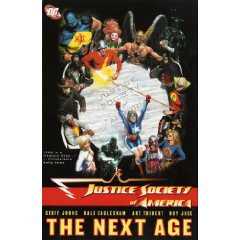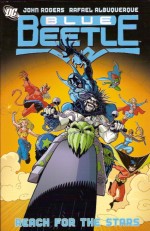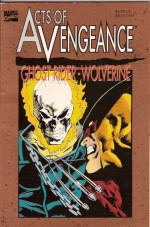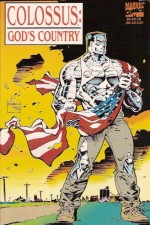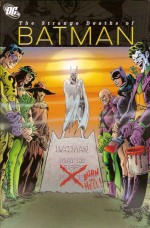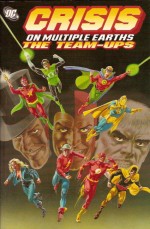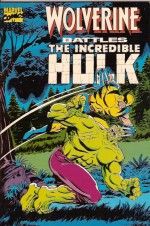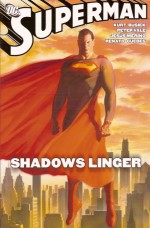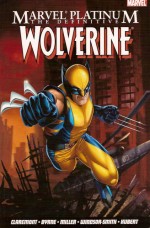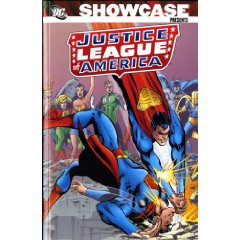
By Gardner Fox, Denny O’Neil, Mike Sekowsky, Dick Dillin & various (DC Comics)
ISBN: 978-1-82856-188-5
By 1968 the new superhero boom looked to be dying just as its predecessor had at the end of the 1940s. Sales were down generally in the comics industry and costs were beginning to spiral, and more importantly “free” entertainment, in the form of television, was by now ensconced in even the poorest household. If you were a kid in the sixties, think on just how many brilliant cartoon shows were created in that decade, when artists like Alex Toth and Doug Wildey were working in West Coast animation studios. Moreover, comic-book heroes were now appearing on the small screen. Superman, Aquaman, Batman, the Marvel heroes and even the JLA were there every Saturday in your own living room…
It was a time of great political and social upheaval. Change was everywhere and unrest even reached the corridors of DC. When a number of creators agitated for increased work-benefits the request was not looked upon kindly. Many left the company for other outfits. Some quit the business altogether.
This fourth monochrome volume reflects the turmoil of the times as the writer and penciller who had created every single adventure of the World’s Greatest Superheroes since their inception gave way to a “new wave” writer and a fresh if not young artist. Collecting issues #61-83 (and re-presenting the stirring covers of #67 and 76: giant editions which reprinted issues #4, 14 & 31, and #7 &12, respectively), this tome covers a society in transition and a visible change in the way DC comics stories were told.
Kicking off the festivities is ‘Operation: Jail the Justice League!’, a sharp and witty action-mystery with an army of super-villains by Gardner Fox, Mike Sekowsky and the superb Sid Greene wherein the team must read between the lines as Green Arrow announces that he’s quitting the team and super-hero-ing!
George Roussos replaced Greene as inker for ‘Panic from a Blackmail Box’, a taut thriller about redemption involving the time-delayed revelations of a different kind of villain, and ‘Time Signs a Death-Warrant for the Justice League’, where the villainous Key finally acts on a scheme he initiated way back in Justice League of America #41. This rowdy fist-fest was Sekowky’s last pencil job on the team (although he returned for a couple of covers). He was transferring his attentions to the revamping of Wonder Woman (for which see the marvellous Diana Prince: Wonder Woman volumes 1–4).
Fox ended his magnificent run on a high point with the two-part annual team-up of the League and the Justice Society of Earth-Two. Creative to the very end, his last story was yet another of the Golden-Age revivals which had resurrected the superhero genre. Issues #64 and 65 featured the ‘Stormy Return of the Red Tornado’ and ‘T.O. Morrow Kills the Justice League – Today!’ with a cyclonic super-android taking on the mantle of the comedic 1940s “Mystery Man” who appeared in the very first JSA adventure (if you’re interested, the original Red Tornado was a brawny washer-woman named Ma Hunkle).
Fox’s departing thriller was the artistic debut of Blackhawk artist Dick Dillin, a prolific draughtsman who would draw all the JLA’s exploits for the next twelve years, as well as many other adventures of DC’s top characters like Superman and Batman. His first jobs were inked by the returning Sid Greene, a pairing that seemed vibrant and darkly realistic after the eccentrically stylish, almost abstract Sekowsky.
Not even the heroes themselves were immune to change. As the market contracted and shifted, so too did the team. With no fanfare the Martian Manhunter was dropped after #61. He just stopped appearing and the minor heroes (ones whose strips or comics had been cancelled) got less and less space in future tales.
Denny O’Neil took over the scripting with #66, a rather dated and heavy-handed satire entitled ‘Divided they Fall!’ wherein defrocked banana-republic dictator Generalissimo Demmy Gog (did I mention it was heavy-handed?) used a stolen morale-boosting ray to cause chaos on a college campus. O’Neil was more impressive with his second outing. ‘Neverwas – the Chaos Maker!’: a time-lost monster on a rampage, but the compassionate solution to his depredations better fitted the social climate and hinted at the joys to come when the author began his legendary run on Green Lantern/Green Arrow.
‘A Matter of Menace’ featured a plot to frame Green Arrow, but is most remarkable for the brief return of Diana Prince. Wonder Woman had silently vanished at the end of #66 and her cameo here is more a plug for her own adventure series than a regulation guest-shot. This is followed by a more traditional guest-appearance in #70’s ‘Versus the Creeper’ wherein the much diminished team of Superman, Batman, Flash, Green Lantern and Atom battle misguided aliens inadvertently brought to Earth by the astoundingly naff Mind-Grabber Kid (most recently seen in Seven Soldiers and 52) with the eerie Steve Ditko-created anti-hero along for the ride if largely superfluous to the plot.
Eager to plug their radical new heroine, Diana Prince guested again in #71’s ‘And So My World Ends!’ a drastic reinvention of the history of The Martian Manhunter from O’Neil, Dillon and Greene which, by writing him out of the series, galvanised and reinvigorated the character for a new generation. The plot introduced the belligerent White Martians of today and revealed how a millennia long race war between the Whites and Greens devastated Mars forever.
‘Thirteen Days to Doom!’ was a moody gothic horror story in which Hawkman was turned into a pillar of salt by demons, precipitating a rare guest-shot for Hawkgirl, but excellent though it was the entire thing was but a prelude to O’Neil’s first shot at the annual JLA/JSA team-up in issues #73 and 74. ‘Star Light, Star Bright… Death Star I See Tonight!’ and ‘Where Death Fears to Tread!’ related the fearsome tale of Aquarius, a sentient but insane star, that magically destroyed Earth-Two until our heroes (with their surviving Golden Age counterparts) manage to restore it, but not without some personal tragedy.
As a result the Black Canary chose to emigrate to Earth-One, handily becoming the team’s resident Girl Superhero, and picking up a new if somewhat unreliable power in the process. The repercussions of her move and Green Arrow losing all his wealth made Justice League of America #75 one of O’Neil’s best. ‘In Each Man there is a Demon!’ (inked by new regular Joe Giella) found the team literally battling their own worst aspects and the heroes’ confidence was further rocked when the enigmatic Joe Dough compromised their beloved mascot in ‘Snapper Carr… Super-Traitor!’
The greater social awareness parading through comics at this time manifested in the next epic two-parter, which also revived another Golden Age Great (presumably to cash-in on the mini-boom in screen Westerns). The Vigilante – a cowboy-themed superhero who battled Bandits and Badmen in a passel of DC titles from 1941-1954 – alerted the team to ‘The Coming of the Doomsters!’, just in time to foil the alien invaders who used pollution as their secret weapon in ‘Come Slowly Death, Come Slyly!’ Another landmark of this still-impressive tale was the introduction of the JLA Satellite, as the team moved from a hole in a mountain to a high-tech orbiting fortress.
‘Night of the Soul-Stealer!’ saw an alien collecting heroic spirits in a magic box, but it was only a prelude to a greater threat as issue #81 revealed his good intentions as the ‘Plague of the Galactic Jest-Master’ threatened to inflict a greater horror upon our entire universe.
This book ends with another grand collaboration between JLA and JSA as property speculators from outer space sought to raze both Earths in ‘Peril of the Paired Planets’, and only the ultimate sacrifice of a true hero could avert trans-dimensional disaster in the concluding ‘Where Valor Fails… Will Magic Triumph?’
Although an era of greatness had ended, it ended at the right time and for sound reasons. These thoroughly wonderful thrillers mark an end and a beginning in comic-book storytelling as whimsical adventure was replaced by inclusivity, social awareness and a tacit acknowledgement that a smack in the mouth couldn’t solve all problems. The audience was changing and the industry was forced to change with them. But underneath it all the drive to entertain remained strong and effective. Charm’s loss is drama’s gain and today’s readers might be surprised to discover just how much punch these tales had – and still have.
But for that you need to get this book…
© 1968, 1969, 2003 DC Comics. All Rights Reserved.
